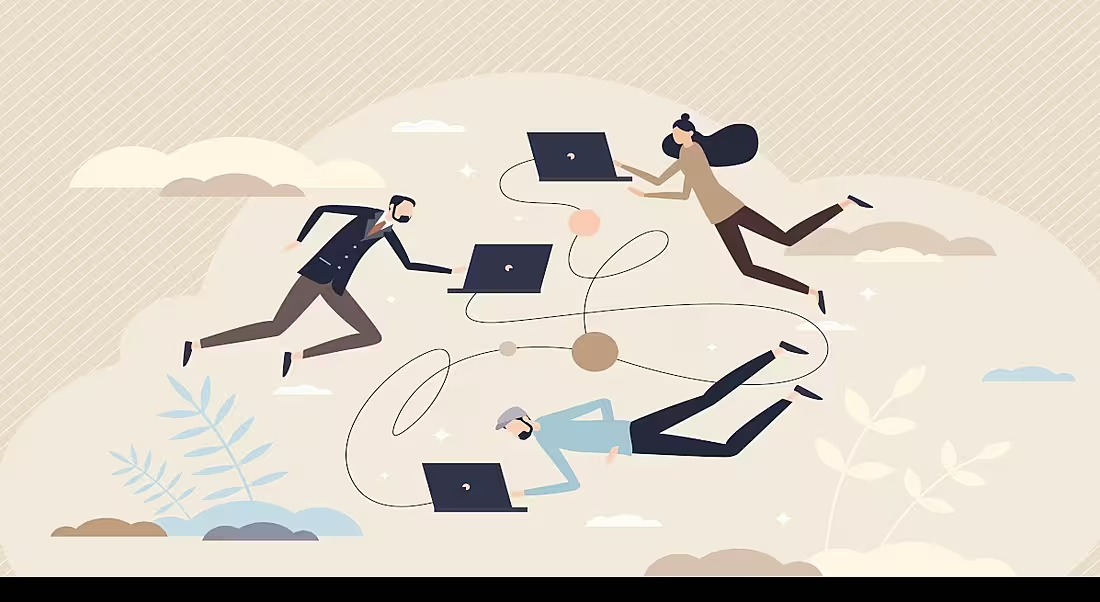Loneliness can be a problem even for the most ardent remote-work fans. Here, we get some tips on how to combat it from Susan Hanson, chief people officer at RainFocus.
Recreating informal chats with co-workers, onboarding new hires and team building are just some of the things companies have had to recalibrate for employees who are not in the office full time. While remote and hybrid working arrangements have there upsides, workers can miss out on experiences that they might have had if they were in an office all the time.
“It’s no secret remote work has revolutionised the way organisations approach work models forever,” says Susan Hanson, chief people officer at RainFocus. “Despite its many benefits, employee workforces, if not managed properly, can develop critical pain points – particularly in connecting with co-workers.”
“The transition from a pandemic-focused remote work setup to a more permanent virtual or hybrid model has decreased efforts to facilitate connection and work-life balance,” Hanson adds. She doesn’t think it is fair that corporate leaders shoulder all of the blame for this.
“It’s not that leaders didn’t try to mitigate this lack of connection. Instead, the momentum carrying us over the last few years has slowly lost its glamour. The difficulty of replicating organic office interactions that build strong teams and workplace friendships continues to be a persistent pain point.
“Nonverbal communication and informal socialising at the office are harder to recreate. Onboarding new hires in a remote environment also presents unique challenges – they miss out on in-person interactions, training and the opportunity to build layered relationships naturally.”
As Hanson says, social experiences at work are not just frivolous office chit-chat; they contribute to workers’ overall happiness, not to mention their development. Colleagues learn from each other when they talk at work and employers that want this to continue for remote employees need to consciously build this in for workers who don’t go to the office all the time.
Challenging, but not impossible
“While building relationships in a remote or hybrid work environment may be more challenging, it’s not impossible,” Hanson says. “Leaders must prioritise investing ample time and cost into creating an inclusive environment that eliminates silos and encourages meaningful connections.”
Remote and hybrid workers should not be forced to choose between the benefits of the office and the benefits of flexible working models. The Great Resignation movement that swept across the working world at the end of the pandemic is proof that workers won’t stand for being unhappy or siloed. Wanting the option to work remotely and flexibly was one of the key reasons many Irish workers said they would leave their jobs, according to a 2021 survey by Workhuman.
The pandemic gave people everywhere a chance to rethink what they want from work and lots want remote working with the benefits of the office still intact. Even workers who don’t want to socialise with their colleagues need to have a connection with them for an organisation to run smoothly.
Loneliness affects workplace performance
Hanson recommends that people managers like her prioritise strengthening relationships with their teams. “This can be through recurring touchpoints, regular conversations about job satisfaction and performance, in-person team meet-ups, etc. Through investing in relationship-building efforts and creating opportunities for meaningful connections, organisations can combat some of the effects of the loneliness epidemic.”
She cites a study from BetterUp that claimed that 43pc of people polled don’t feel a sense of connection to co-workers, while 53pc don’t look forward to working because of a loss of connection to their peers. On workplace loneliness, she says: “The resulting impact that’s becoming a growing issue for organisations is how it affects an employee’s overall wellbeing and job satisfaction. And, in turn, it also impacts the employee’s work performance.”
Addressing these social challenges requires “intentional effort and creativity”, according to Hanson. She is keen to point out that employees should voice their concerns to leaders.
Not a one-sided issue
“It’s not a one-sided team at the end of the day, and managers and employees must hold themselves accountable to voice their expectations and needs.” It’s up to CPOs, HR leaders and managers to set clear expectations for daily connections, invest in building remote-management skills and personalise their approach to resonate with each employee’s individual needs.
And it’s up to employees to build on this by stepping out of their comfort zones a little bit and doing things such as participating in company activities, listening in on other departments’ meetings and actively engaging with their colleagues.
“Intentional initiatives like mentorship, professional development, networking lunches and executive roadshows can foster trust, community and engagement among dispersed teams. Leaders can break down geographical and cultural silos by embracing events and event capabilities,” says Hanson.
Hanson’s employer RainFocus has a vested interest in the events industry; it’s an event-marketing platform that sells tech to organisations running virtual, hybrid and in-person events.
She thinks that embracing events is a good way of alleviating Zoom and Slack fatigue. Although, she points out that alongside events, video calls are a better way of connecting remote employees than voice calls and emails. The face-to-face connection is vital. A combination of semi-regular organised events, themed Slack or Teams channels, employee check-in calls and flexible learning and development opportunities can help encourage workplace connections to form and even thrive.
Returning to her point about intentional effort and creativity, Hanson concludes by emphasising that there is no “one-size-fits-all solution” when it comes to helping remote and hybrid workers feel included by the company. Companies that haven’t already done so must rebuild their people-management policies that place employees at the centre, she warns.
And when it comes to looking after employee welfare, “actions always speak louder than words, so organisations should prove their intentions to build an inclusive and interconnected community”.
10 things you need to know direct to your inbox every weekday. Sign up for the Daily Brief, Silicon Republic’s digest of essential sci-tech news.




